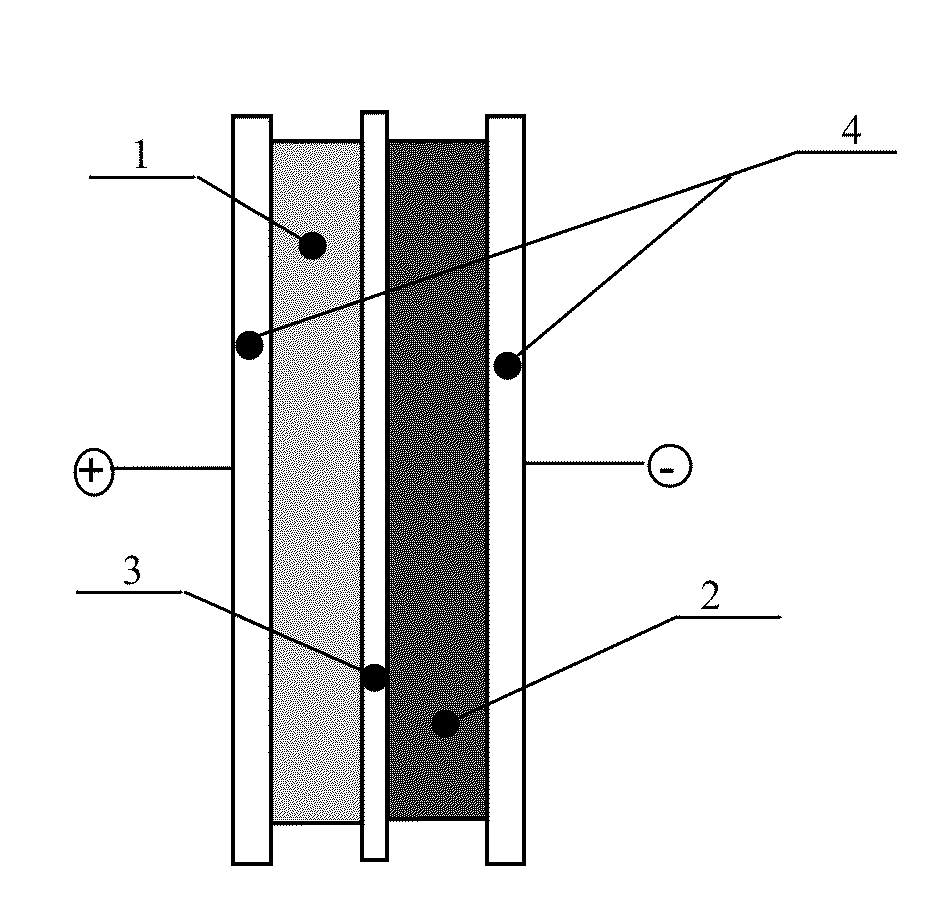Asymmetric electrochemical supercapacitor and method of manufacture thereof
a supercapacitor and electrochemical technology, applied in the field of asymmetric electrochemical supercapacitors, can solve the problems of high power density of supercapacitors, low energy densities when compared to batteries, and high cost of supercapacitors, so as to improve power density, improve power density, and improve faradaic capacity
- Summary
- Abstract
- Description
- Claims
- Application Information
AI Technical Summary
Benefits of technology
Problems solved by technology
Method used
Image
Examples
example
[0061]A layered double hydroxide (LDH) active material was prepared by co-precipitation and the simultaneous addition / mixing of metal nitrates and a base solution (NaOH+Na2CO3) at constant pH (8-10). The resulting product was subsequently aged and crystallized in the synthesis solution overnight (75° C.), and then isolated by centrifuging / decanting and washing until free of Na+. The material was dried and ground using a mortar and pestle. A series of layered double hydroxide compositions were prepared and given in table 1.
[0062]
TABLE 1AgingAgingBETPoreMeantemp.timesurfacevolumecrystalliteComposition(° C.)(h)area (m2 / g)(cm3 / g)size (nm)[Co0.40Ni0.29Al0.31(OH)2](CO3)0.165752452.60.39020.9[Co0.36Ni0.24Al0.4(OH)2](CO3)0.22221420.536.1[Co0.39Ni0.27Al0.34(OH)2](CO3)0.1775211150.69.2[Co0.29Ni0.19Zn0.15Al0.39(OH)2](CO3)0.1857520820.7512.6[Co0.21Ni0.14Zn0.3Al0.34(OH)2](CO3)0.177520750.73412.9
A sample of [Co0.36Ni0.24Al0.4(OH)2](CO3)0.2 was prepared into an electrode by mixing it with 20 wt. %...
PUM
 Login to View More
Login to View More Abstract
Description
Claims
Application Information
 Login to View More
Login to View More - R&D
- Intellectual Property
- Life Sciences
- Materials
- Tech Scout
- Unparalleled Data Quality
- Higher Quality Content
- 60% Fewer Hallucinations
Browse by: Latest US Patents, China's latest patents, Technical Efficacy Thesaurus, Application Domain, Technology Topic, Popular Technical Reports.
© 2025 PatSnap. All rights reserved.Legal|Privacy policy|Modern Slavery Act Transparency Statement|Sitemap|About US| Contact US: help@patsnap.com



